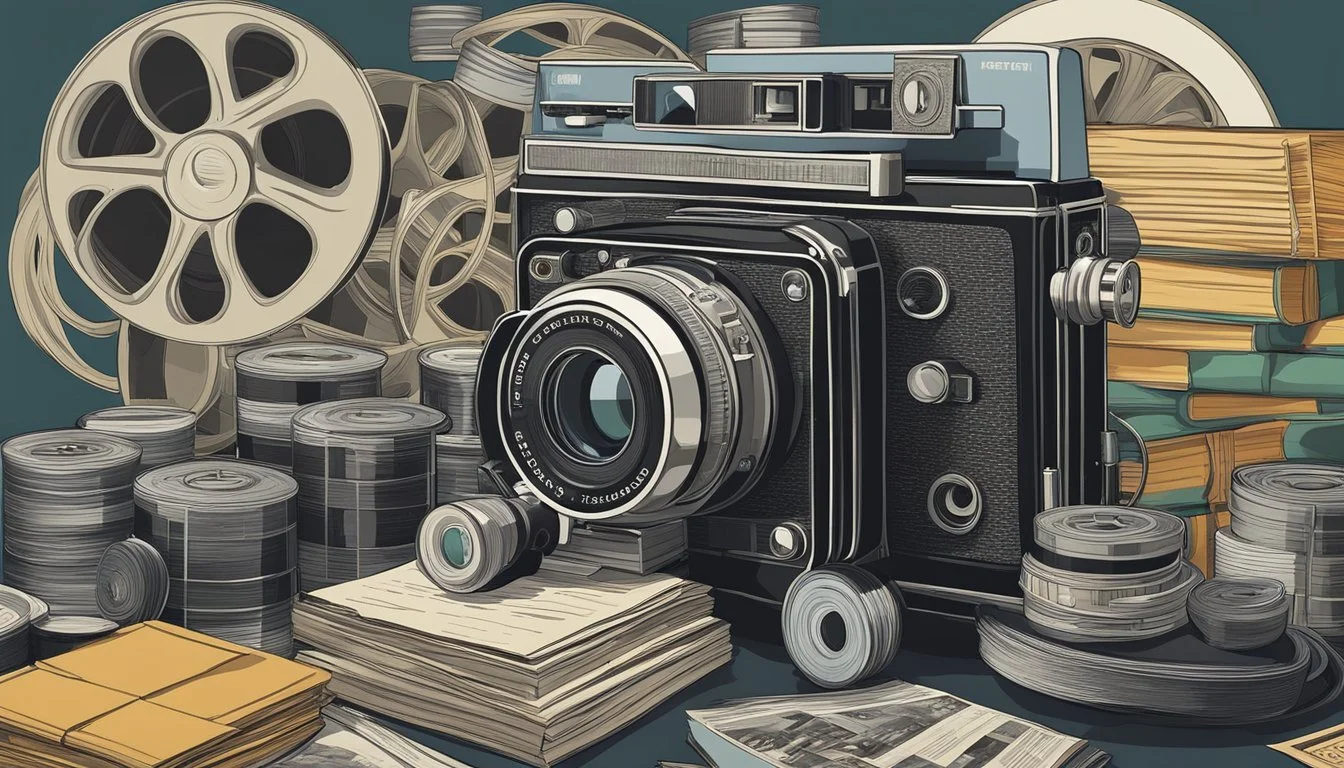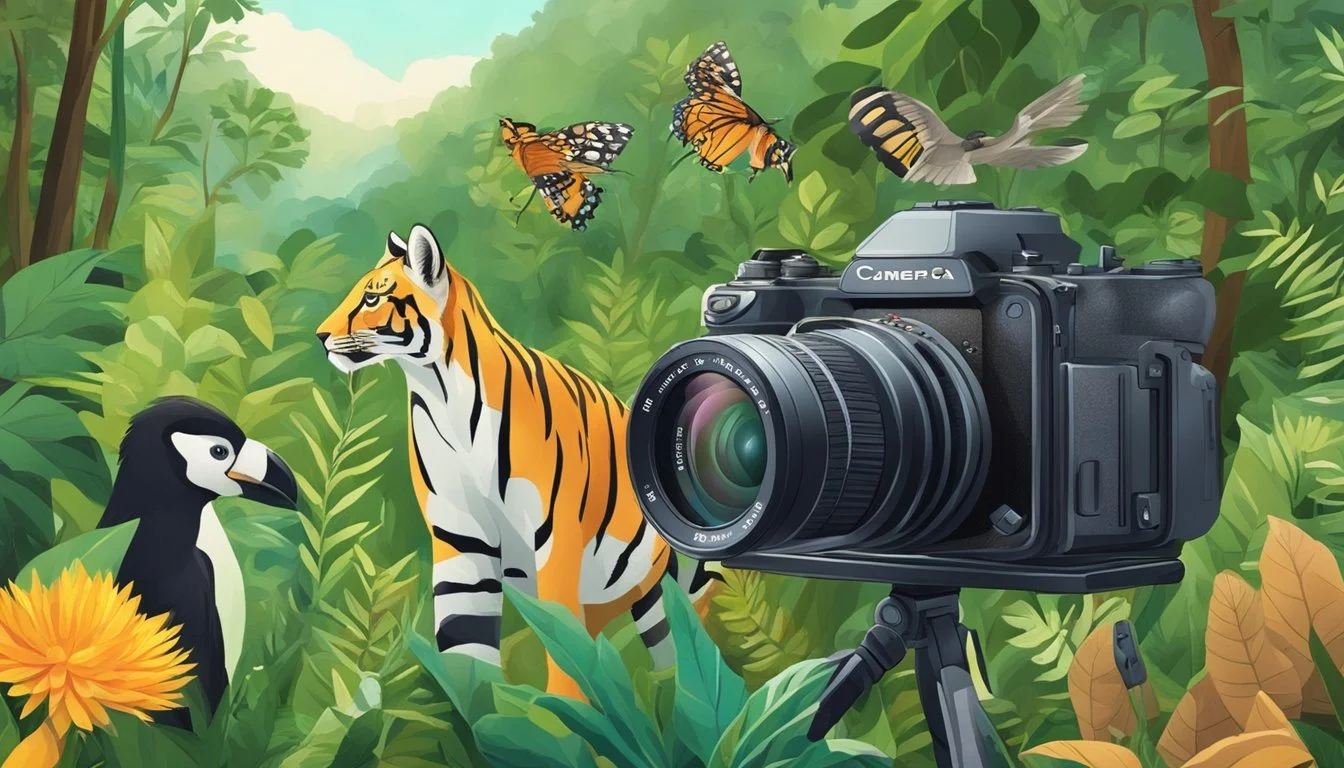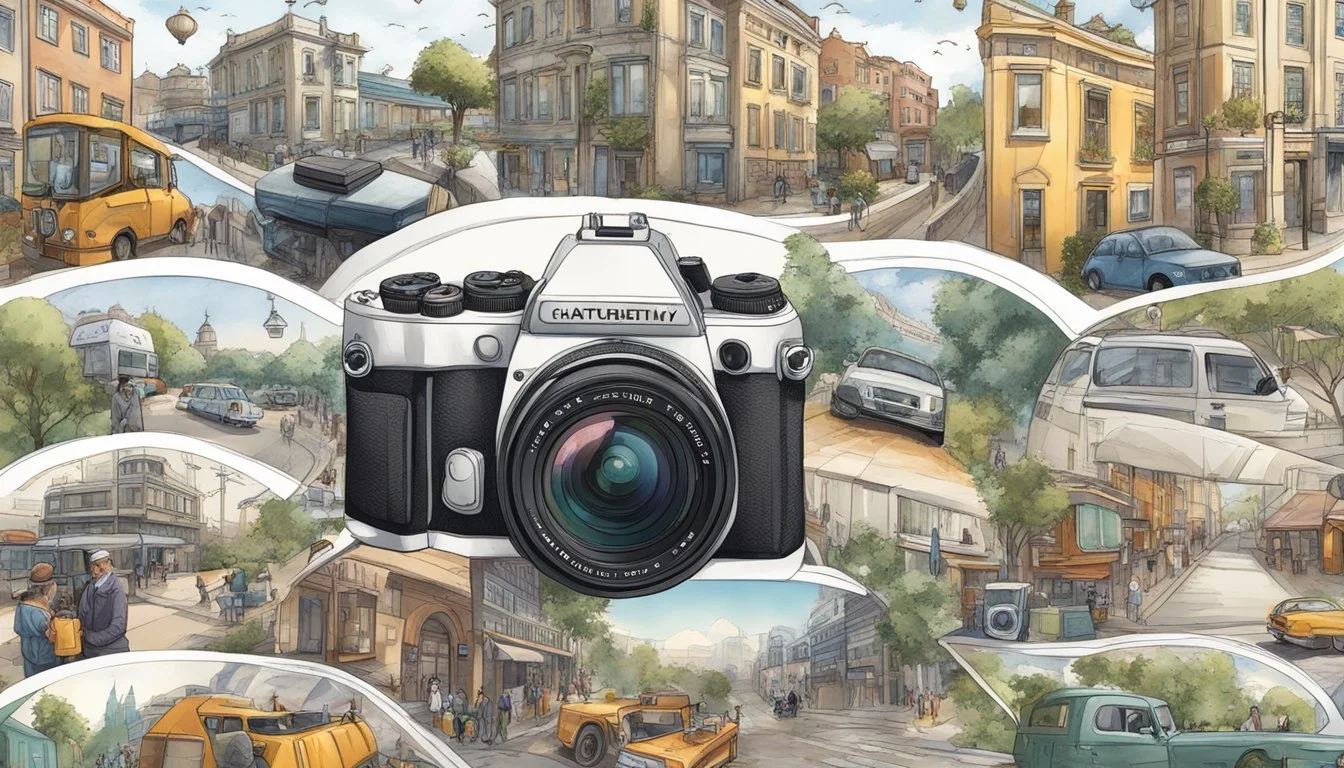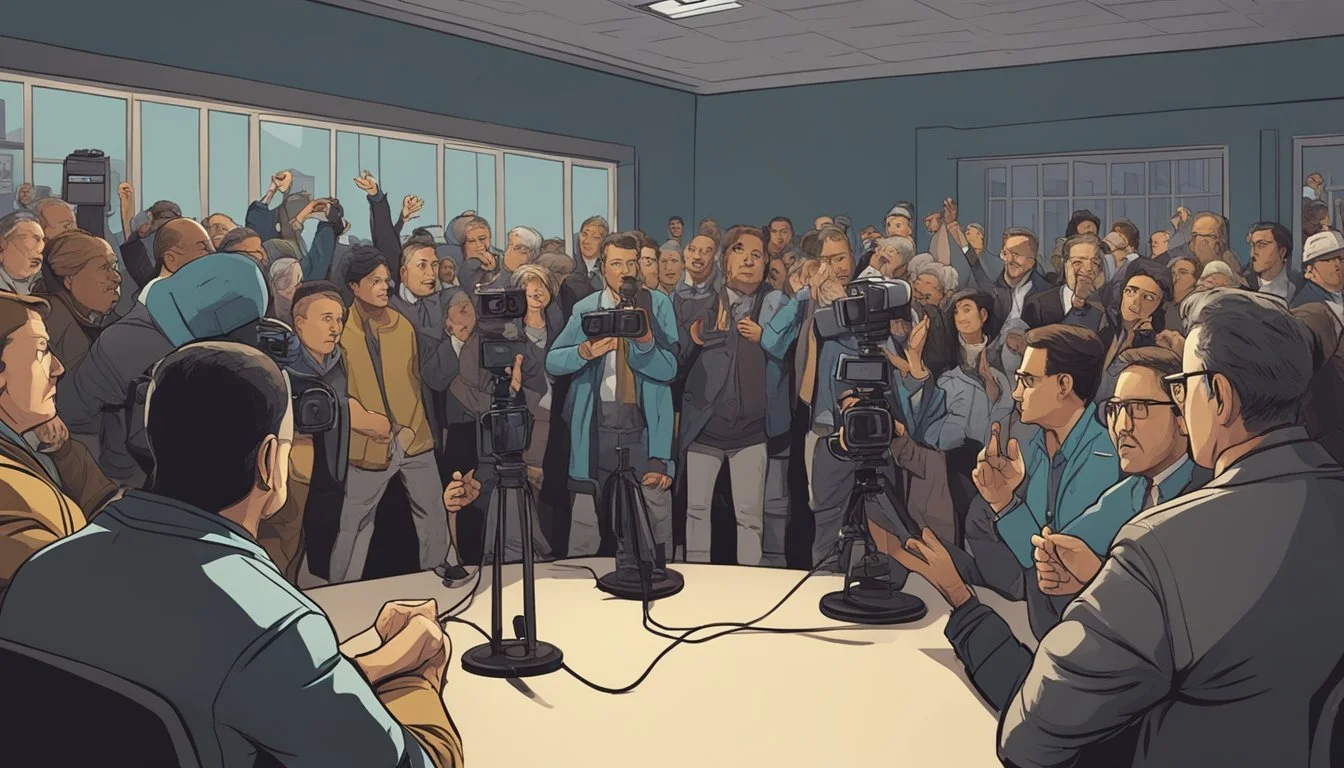Shocking Truths Revealed: These Documentaries Will Change How You See Everything!
Documentary films have long captivated audiences with their ability to shed light on real-world stories and issues. From social experiments to political exposés, these non-fiction works offer viewers a unique window into diverse subjects and perspectives. The best documentaries transport viewers into new worlds, challenge preconceptions, and inspire meaningful dialogue about important topics.
The documentary genre has produced numerous critically acclaimed works over the years. Films like "Super Size Me" and "Citizenfour" have earned widespread recognition for their thought-provoking explorations of contemporary issues. Other documentaries focus on quirky competitions or fascinating individuals, providing entertainment alongside insight into niche subcultures.
Streaming platforms have made documentaries more accessible than ever before. Services like Netflix offer extensive libraries of documentary content, from true crime series to nature films. This increased availability has allowed audiences to discover hidden gems and expand their understanding of the world through the lens of non-fiction storytelling.
History and Evolution of Documentaries
Documentaries have undergone significant transformations since their inception, evolving in style, technique, and subject matter. This journey has been shaped by pioneering filmmakers, technological advancements, and changing audience expectations.
Pioneering Films and Filmmakers
Robert Flaherty's "Nanook of the North" (1922) is widely considered the first feature-length documentary. It captured the daily life of an Inuit family in the Canadian Arctic. Flaherty's work set the stage for future documentarians, although it faced criticism for staging some scenes.
In the 1920s and 1930s, Soviet filmmakers like Dziga Vertov experimented with montage techniques. Vertov's "Man with a Movie Camera" (1929) showcased innovative cinematography and editing.
John Grierson, a British filmmaker, coined the term "documentary" in the 1930s. He produced influential works like "Drifters" (1929) and established the National Film Board of Canada.
Transition to Modern Documentary Filmmaking
The 1960s saw the emergence of cinéma vérité and direct cinema. Filmmakers like Frederick Wiseman and D.A. Pennebaker used lightweight cameras and sync sound to capture unscripted moments.
"Primary" (1960) by Robert Drew followed John F. Kennedy's presidential campaign, marking a shift towards more observational styles.
Errol Morris's "The Thin Blue Line" (1988) introduced reenactments and stylized interviews, blurring the lines between documentary and fiction.
Rise of Different Documentary Styles
The 1980s and 1990s witnessed a diversification of documentary styles. Michael Moore's "Roger & Me" (1989) popularized the personal, satirical approach to social issues.
Claude Lanzmann's "Shoah" (1985) set a new standard for historical documentaries. Its nine-hour runtime and reliance on witness testimony created a powerful Holocaust narrative.
Experimental documentaries gained prominence. Godfrey Reggio's "Koyaanisqatsi" (1982) used striking visuals and music to comment on modern life, eschewing traditional narration.
The advent of digital technology in the 2000s democratized documentary filmmaking, leading to an explosion of diverse voices and perspectives in the genre.
Defining the Best Documentaries
Exceptional documentaries captivate audiences through compelling storytelling, groundbreaking techniques, and lasting cultural impact. They shed light on important issues and shape public discourse.
Critical Acclaim and Awards
Critics play a crucial role in identifying outstanding documentaries. "Certified Fresh" ratings on Rotten Tomatoes highlight films with widespread critical approval. The Thin Blue Line, Sans Soleil, and Citizenfour have earned this distinction.
prestigious awards like the Academy Awards and Sundance Film Festival honors elevate documentaries' profiles. Bowling for Columbine won the Oscar for Best Documentary Feature in 2003, bringing attention to gun violence issues in America.
Critics assess factors like research depth, narrative structure, and visual storytelling when evaluating documentaries. Films that excel in these areas often receive glowing reviews and accolades.
Cultural Impact
The best documentaries spark conversations and drive social change. They expose injustices, challenge perceptions, and inspire action. Citizenfour's revelations about government surveillance prompted global debates on privacy and security.
Some documentaries become cultural touchstones, referenced years after release. Super Size Me altered public perception of fast food, leading to menu changes at major chains.
Impactful documentaries often gain traction through word-of-mouth and social media. They generate news coverage, influence policy discussions, and shape public opinion on key issues.
Innovative Storytelling Techniques
Groundbreaking documentaries push the boundaries of non-fiction filmmaking. They employ creative visual styles, unique narrative structures, and immersive techniques to engage viewers.
The Thin Blue Line pioneered the use of dramatic reenactments in true crime documentaries. This approach added visual interest and helped viewers better understand complex events.
Sans Soleil blended travelogue, philosophical essay, and experimental film techniques. Its non-linear structure and poetic narration challenged traditional documentary conventions.
Technological advancements enable new storytelling methods. Virtual reality documentaries offer immersive experiences, while interactive web-based documentaries allow viewers to explore content at their own pace.
Genres and Themes
Documentary films span a wide range of subjects and styles, offering viewers unique perspectives on diverse topics. These films explore real-world issues, individuals, and phenomena through various lenses and approaches.
Social and Political Exposés
Social and political documentaries shed light on pressing issues and power structures. They often employ investigative techniques to uncover hidden truths. Films like "Citizenfour" expose government surveillance programs, while "The Act of Killing" examines Indonesian genocide. These documentaries aim to inform and provoke thought.
Some films focus on activism, following individuals or groups working for social change. Others explore social experiments, such as "Super Size Me," which investigates the effects of fast food on health.
Biographical Documentaries
Biographical documentaries delve into the lives of notable figures, both past and present. These films offer intimate portrayals of their subjects, combining archival footage, interviews, and reenactments.
Examples include "RBG" about Supreme Court Justice Ruth Bader Ginsburg and "I Am Not Your Negro" about writer James Baldwin. Biographical documentaries often highlight the subject's impact on society and their field of expertise.
Music and Performances
Music documentaries, sometimes called "rockumentaries," capture the energy and artistry of musicians and performers. These films often blend concert footage with behind-the-scenes glimpses into artists' lives.
Notable examples include "Woodstock" and "The Last Waltz." Some focus on specific performances, while others chronicle entire careers or music scenes. These documentaries appeal to music fans and offer cultural insights.
Nature and Wildlife
Nature documentaries transport viewers to remote corners of the globe, showcasing Earth's diverse ecosystems and wildlife. Advanced filming techniques capture stunning visuals of rarely seen animals and natural phenomena.
Series like "Planet Earth" and "Blue Planet" set new standards for nature filmmaking. These documentaries often highlight conservation efforts and environmental challenges, educating viewers about the natural world's beauty and fragility.
Sports and Adventure
Sports documentaries cover a wide range of athletic pursuits, from professional competitions to extreme adventures. They often focus on the determination and skill of athletes, as well as the cultural significance of sports.
Films like "Hoop Dreams" follow aspiring basketball players, while others document mountaineering expeditions or surfing culture. These documentaries showcase human physical and mental limits, inspiring viewers with tales of perseverance and achievement.
Influential Documentarians
Documentary filmmaking has been shaped by visionaries who push boundaries and shed light on important stories. These directors have left an indelible mark on the genre through their unique perspectives and innovative techniques.
Masters of the Craft
Errol Morris revolutionized documentary storytelling with his 1988 film "The Thin Blue Line," which helped exonerate a wrongly convicted man. His use of stylized reenactments and probing interviews set new standards for the genre. Michael Moore brought a confrontational approach to documentaries, tackling social and political issues in films like "Bowling for Columbine" and "Fahrenheit 9/11."
Barbara Kopple's "Harlan County, USA" (1976) showcased her talent for immersive storytelling, documenting a Kentucky coal miners' strike with raw intensity. Steve James gained acclaim for "Hoop Dreams" (1994), following two inner-city Chicago teens pursuing basketball careers over five years.
New Voices in Documentary Filmmaking
Ava DuVernay has emerged as a powerful voice in documentary, exploring racial injustice in "13th" (2016). Her work combines historical analysis with contemporary relevance. James Marsh blends documentary and narrative techniques, as seen in "Man on Wire" (2008), which recounts Philippe Petit's high-wire walk between the World Trade Center towers.
These filmmakers represent a new wave of documentarians who are expanding the genre's possibilities. They often tackle complex social issues, utilizing innovative visual styles and storytelling methods to engage audiences and provoke thought.
Documentary Filmmaking Techniques
Documentary filmmaking employs various techniques to capture and present real-life stories. These methods help create compelling narratives that engage viewers and convey important information.
Cinematography and Visual Style
Cinematography plays a crucial role in documentary filmmaking. Filmmakers use different camera angles, movements, and compositions to enhance storytelling. Hand-held cameras often create an intimate, immediate feel, while static shots can emphasize stability or contemplation.
Lighting techniques vary based on the subject matter and available resources. Natural light is common in observational documentaries, while controlled lighting setups are used for interviews.
Visual styles can range from raw and gritty to polished and cinematic. The choice depends on the filmmaker's artistic vision and the story's needs. Some documentaries, like those of Ken Burns, use a distinct visual approach with slow pans across archival photographs.
Narrative Structures
Documentaries employ various narrative structures to present information effectively. Chronological storytelling is common, following events as they unfold over time. This approach works well for historical documentaries or films covering specific incidents.
Thematic structures organize content around key ideas or topics. This method allows filmmakers to explore complex subjects from multiple angles.
Some documentaries use a character-driven approach, focusing on individuals to illustrate broader issues. Films like "Man on Wire" about Philippe Petit use this technique to great effect.
Interviews and Participatory Elements
Interviews form the backbone of many documentaries. Filmmakers use various interview styles, from formal sit-down conversations to casual, on-the-go chats. The choice depends on the subject matter and desired tone.
Participatory documentaries involve the filmmaker directly in the story. This technique can create a more personal connection with the audience and provide unique insights.
Investigative journalism techniques are often employed in documentary filmmaking. These methods help uncover hidden truths and present complex information in an accessible manner.
Some documentaries, like "Nanook of the North," blend observation with staged elements. While controversial, this approach can provide a deeper understanding of cultural practices and ways of life.
Cultural and Societal Influence
Documentaries shape public discourse, challenge perceptions, and drive social change. They serve as powerful tools for education, advocacy, and preserving cultural memory.
Advocacy and Reform
Documentaries often catalyze social and political movements. "Blackfish" exposed animal welfare issues at SeaWorld, focusing on the orca Tilikum. The film sparked public outrage and led to policy changes in marine parks.
Some documentaries directly influence legislation. "The Invisible War" examined sexual assault in the U.S. military, prompting congressional hearings and reforms in how the armed forces handle such cases.
Filmmakers sometimes collaborate with advocacy groups to amplify their message. This partnership extends a documentary's impact beyond the screen, mobilizing viewers to take action on issues.
Public Perception and Memory
Documentaries shape collective memory of historical events. "The Civil War" by Ken Burns redefined how Americans view this pivotal period, bringing archival photos to life through innovative techniques.
They can also challenge dominant narratives. "The Act of Killing" forced Indonesia to confront its violent past, sparking national debates about historical memory and reconciliation.
Documentaries influence public opinion on current issues too. "An Inconvenient Truth" raised awareness about climate change, making it a mainstream concern in American culture and politics.
Representing Reality
Documentaries claim to represent truth, but their methods vary. Observational films like "Salesman" aim for unobtrusive recording of events. Others, like Michael Moore's works, adopt a more interventionist approach.
The rise of streaming platforms has changed documentary consumption. Netflix's "Making a Murderer" became a cultural phenomenon, sparking widespread interest in true crime stories.
Ethical concerns arise around representation. Filmmakers must balance storytelling with responsibility to their subjects. The impact on individuals featured can be profound, both positive and negative.
Challenges and Controversies
Documentary filmmaking presents unique ethical, artistic, and legal hurdles. Filmmakers must navigate complex issues while striving to tell compelling stories and reveal truths.
Ethical Considerations
Documentary directors face tough choices about how to portray subjects. "Capturing the Friedmans" stirred debate by including disturbing home videos of a family accused of child abuse. Some argued this exploited the victims, while others praised its raw honesty.
Filmmakers must balance truth-telling with respect for privacy. Consent becomes tricky when subjects may not fully grasp the implications of participating.
The use of reenactments also raises ethical questions. "The Act of Killing" had Indonesian death squad leaders dramatize their crimes, blurring lines between documentation and sensationalism.
Objectivity and Bias
Critics often scrutinize documentaries for bias. Even well-intentioned filmmakers may unconsciously shape narratives to fit preconceived ideas.
"Project Nim" faced criticism for its portrayal of animal research. Some scientists felt it oversimplified complex issues and villainized researchers.
Editing choices inevitably reflect a point of view. Filmmakers must strive for fairness while acknowledging their own perspectives.
Funding sources can also influence content. Corporate or political backing may raise questions about a film's independence and motivations.
Legal and Safety Concerns
Documentaries tackling sensitive topics risk legal challenges. Films exposing corruption or wrongdoing may face defamation suits or censorship attempts.
"Jodorowsky's Dune" navigated complex copyright issues while exploring an unproduced film adaptation. Obtaining rights to archival footage and music can be costly and time-consuming.
Safety concerns arise when documenting dangerous situations. War zone reporters and nature filmmakers take physical risks to capture footage.
Protecting vulnerable subjects is crucial. Whistleblowers and activists may face retaliation for participating in documentaries exposing injustice.
Notable Documentary Releases
Documentary filmmaking has reached new heights in recent years, with groundbreaking works that challenge perceptions and inspire audiences. Filmmakers have pushed boundaries in storytelling, technical innovation, and subject matter exploration.
Critically Acclaimed Titles
"I Am Not Your Negro" (2016) brought James Baldwin's unfinished manuscript to life, offering a powerful examination of race in America. The film garnered widespread critical praise for its timely message and compelling narrative structure.
"20 Feet from Stardom" (2013) shone a spotlight on backup singers, winning the Oscar for Best Documentary Feature. Its blend of music and personal stories resonated with audiences and critics alike.
"Life Itself" (2014) celebrated the life of renowned film critic Roger Ebert. The intimate portrait provided insight into Ebert's passion for cinema and his battle with cancer.
Innovative and Influential Works
"The Thin Blue Line" (1988) revolutionized the true crime genre. Errol Morris's film used reenactments and Philip Glass's score to investigate a murder case, ultimately leading to the release of a wrongly convicted man.
"They Shall Not Grow Old" (2018) breathed new life into World War I footage. Peter Jackson's team colorized and enhanced century-old film, creating an immersive experience that brought viewers closer to the reality of trench warfare.
"For Sama" (2019) offered a raw, firsthand account of the Syrian conflict. Filmed over five years, it provided a deeply personal perspective on war and motherhood.
Breaking New Ground
"Sparks" (2021) delved into the long career of the influential yet underappreciated band. Edgar Wright's energetic approach to music documentary breathed new life into the genre.
"Super Size Me" (2004) turned the camera on filmmaker Morgan Spurlock in a month-long fast food experiment. The film sparked debates about nutrition and corporate responsibility.
"Citizenfour" (2014) captured Edward Snowden's NSA revelations in real-time. Laura Poitras's film provided unprecedented access to one of the most significant whistleblowing events in recent history.
The Future of Documentary Filmmaking
Documentary filmmaking is evolving rapidly, embracing new technologies and storytelling approaches. Filmmakers are exploring innovative ways to engage audiences and share diverse perspectives from around the world.
Emerging Technologies and Platforms
Virtual reality (VR) and augmented reality (AR) are opening up exciting possibilities for immersive documentaries. These technologies allow viewers to step inside stories and experience them firsthand. For example, "Flee" used animation to protect its subject's identity while telling a powerful refugee story.
AI-powered tools are streamlining production processes, from automated transcription to intelligent editing software. This frees up filmmakers to focus on creative aspects and human connections.
Streaming platforms are providing wider distribution for documentaries, reaching global audiences instantly. This has led to a surge in demand for nonfiction content across various formats and lengths.
The Role of Crowdfunding and Independent Production
Crowdfunding platforms have become vital for independent documentarians. They allow filmmakers to connect directly with audiences and secure funding for passion projects.
This model enabled the creation of "Four Daughters," a deeply personal exploration of family and loss. It also supported "All the Beauty and the Bloodshed," which tackled challenging subjects like the opioid crisis.
Independent production is fostering more diverse voices and perspectives in documentary filmmaking. It's allowing for experimentation with form and content, pushing the boundaries of the genre.
Global Perspectives and Stories
Documentaries are increasingly showcasing stories from underrepresented communities worldwide. Films like "Waltz with Bashir" and "Tunisian Mother" bring unique cultural insights to global audiences.
International co-productions are becoming more common, combining resources and expertise across borders. This approach allows for more ambitious projects and broader distribution.
Multilingual documentaries are on the rise, with improved subtitling and dubbing technologies making films accessible to diverse language groups. This trend is helping to break down cultural barriers and promote cross-cultural understanding.







